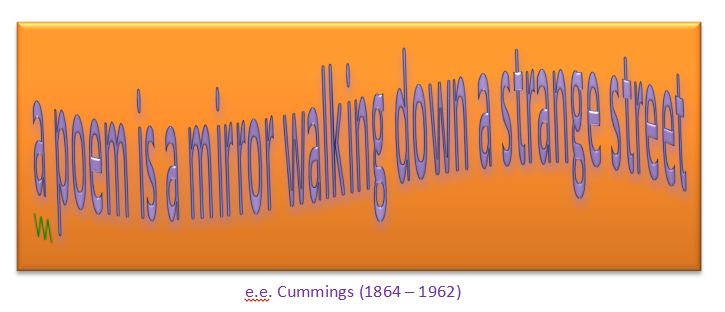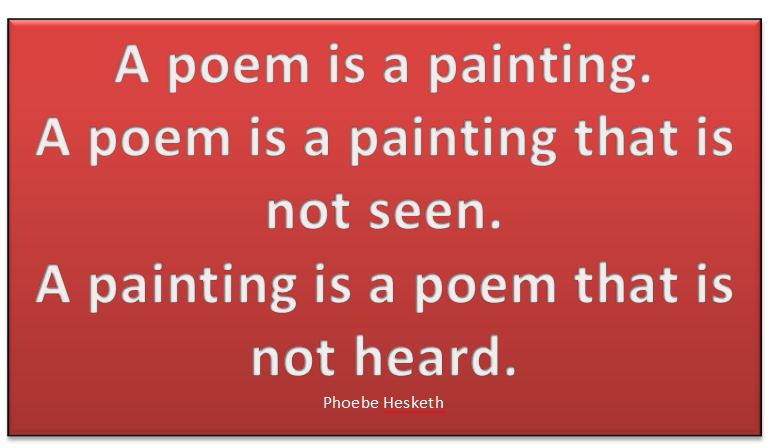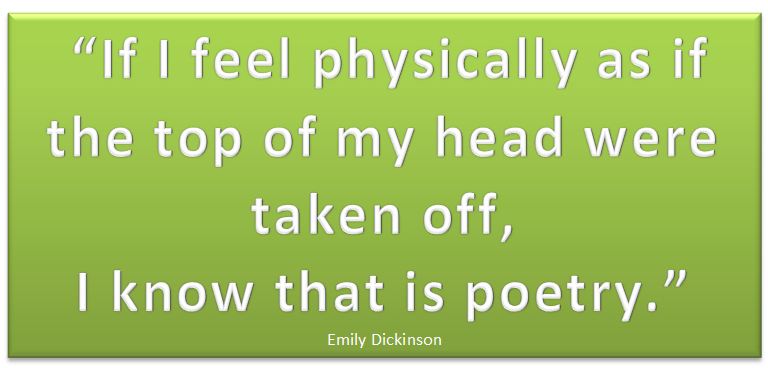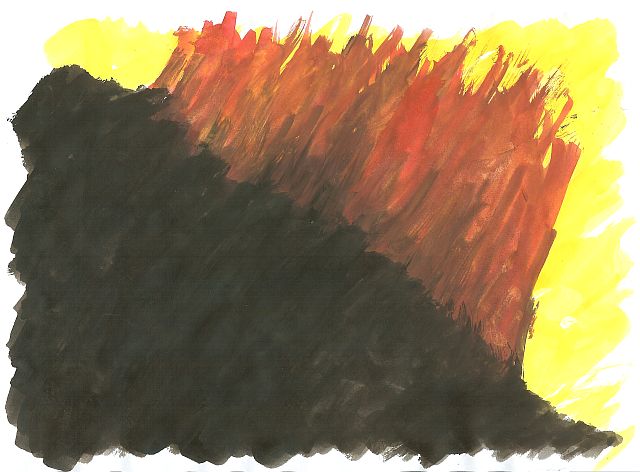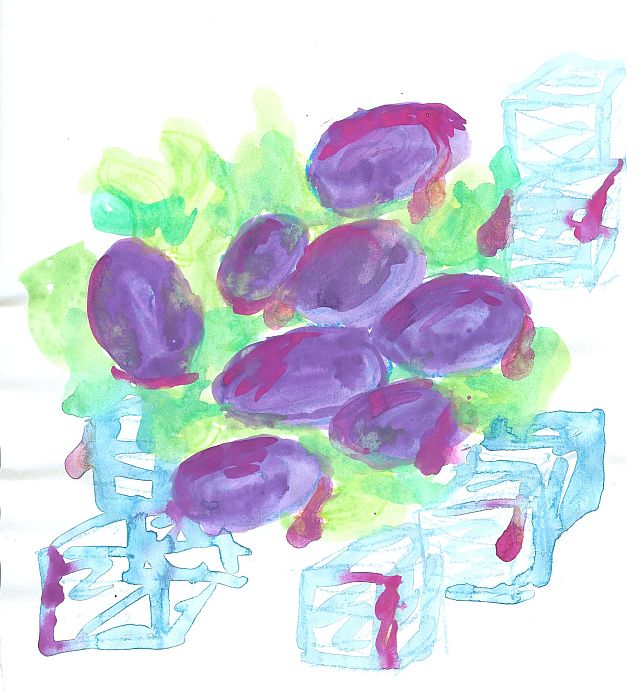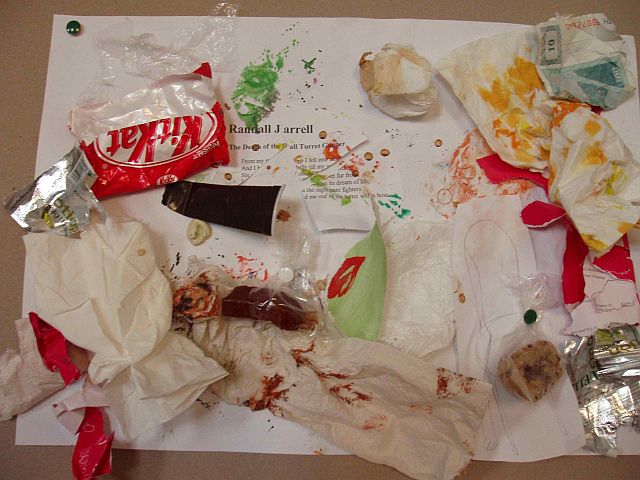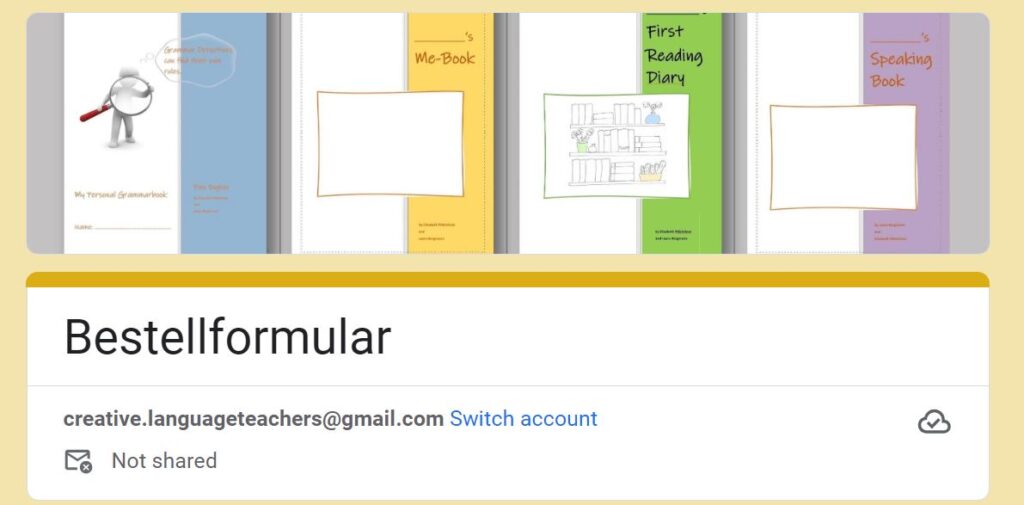Reading and writing poetry
in the foreign language classroom:
Ideas for Using Poetry in Upper School
- What is poetry?
Students work in groups and write a definition of “poetry”. They present their definitions to the class. Then show them the following definitions by famous poets.
-
Working with poetry:
Introduction to Poetry
Billy Collins
I ask them to take a poem and hold it up to the light like a color slide
or press an ear against its hive.
I say drop a mouse into a poem and watch him probe his way out,
or walk inside the poem’s room and feel the walls for a light switch.
I want them to waterski across the surface of a poem waving at the author’s name on the shore.
But all they want to do is tie the poem to a chair with rope and torture a confession out of it.
They begin beating it with a hose to find out what it really means.
from The Apple that Astonished Paris, 1996 University of Arkansas Press, Fayetteville, Ark.
-
Pick a poem:

Hang a selection of poems on a tree in the schoolyard or on a clothes line in the classroom (use pegs). Students walk around, read lots of poems and pick one they like. The students then paint the poem (see next step) or use it for another follow-up task.
-
Painting a poem:
Students choose a poem from a fairly large collection and try to express the same idea in a painting. Bring watercolors, water soluble wax crayons, paper, brushes, cups and a rag to clean up the mess.
- Writing poems:
Students choose an object (sea-shell, stone, plastic toys, postcard….) and collect ideas on a sheet. Only single words are allowed. (10min) Then write a poem using (only) the words they have collected. Give a choice of formats (see extra poetry package), e.g.: list poem, recipe poem, diamond poem, haiku, acrostic poem, visual poem…
-
Line-breaking:
Type a poem as run-on text. Ask students to rearrange lines in form of a poem and decide where to break the lines. Compare different student versions, then show original on an OHT.
These poems have worked well: examples for line-breaking
-
Sonnets:
Teach typical rhyme and rhythm of sonnets, then cut up a sonnet – students reassemble it correctly. (Cut after every other line!!! Single lines are too hard.)
-
Working with parodies:
Show students some parodies of famous poems (e.g. Straphanger, Poems not on the Underground). Students choose a famous poem and write their own parody. Students my use internet poetry pages to find famous poems and parodies.
-
Poem into short story or article:
Find 3-4 poems where the speaker has a clearly identifiable problem. Students choose one poem and write a short story based upon it. The speaker of the poem becomes the protagonist of their short story. Ballads can be used as springboards for writing stories or newspaper articles.
Collect several poems around a theme (war poems, love and lust poems, dreams and nightmares, civil rights, growing up, family, …) Do some of the above tasks
-
Poems and Paintings:
Find famous poems that have inspired artists to paintings and vice versa. E.g: Icarus poems and paintings: Students read and discuss the myth, read different poems and discuss the different interpretations of the myth, then match poems with fitting paintings or paint their own.
Vincent van Gogh’s paintings can also be very inspiring starting points for writing poems and many poets and song-writers have been inspired by his work. Find a few project ideas here.
- From Painting to Poem:
Use a painting (arts postcards or OHT), students interpret the scene (collect ideas….) then write a poem or a short story about it. Hopper paintings work very well for this task (e.g.: The Automat…) Portrait paintings can be used in this way to write “Secret thoughts of…” poems or stories.
- Found poems:
Hand out a recent newspaper article, advertisement or other prose text. Students highlight words they like, then use some of these words to make a poem. No extra words must be used. (The topic can be kept or changed, e.g. using a tourist brochure to praise or criticize tourism or a place…). Find more details on this handout.
- Haikus: Snapshots of Life
Haikus are a wonderful format to catch the students’ memories and impressions during a class-trip abroad. Have a look at the worksheet “Snapshots of America”. After the trip each student contributes a haiku and a picture to a book “Snapshots of America”.
-
Tools of the trade:

